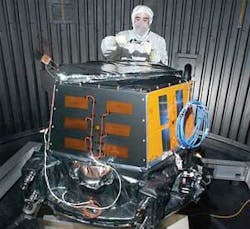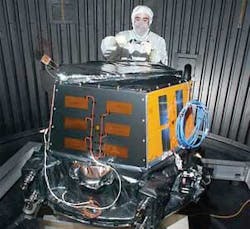NASA engineers needed a real-time operating system (RTOS) to control cameras on their Deep Impact Probe, the July 2005 mission that collided with a comet. They found a solution with ThreadX from Express Logic in San Diego.
Deep Impact was a pair of spacecraft designed by Ball Aerospace & Technologies Corp. intended to collide with deep-space comet Tempel 1 and excavate material from the nucleus of the comet.
Together, the flyby spacecraft and the impactor spacecraft featured three advanced instruments for imaging the comet. Deep Impact used a medium-resolution imager (MRI), a high-resolution imager (HRI), and an impactor-targeting sensor (ITS).
Express Logic’s ThreadX real-time operating system (RTOS) managed the operation of the CCD camera controllers in all three instruments. Each instrument guided the impactor onto a collision course with the comet and took the science data before, during, and after impact with the comet. The HRI was the primary science instrument for the mission, composed of a telescope with a 30-centimeter (11.8 inch) aperture, an infrared (IR) spectrometer, and a multispectral CCD camera.
NASA designers developed the project software with MULTI IDE from Green Hills Software in Santa Barbara, Calif.-an integrated development environment for embedded applications. For more information, see www.expresslogic.com or www.ghs.com.




